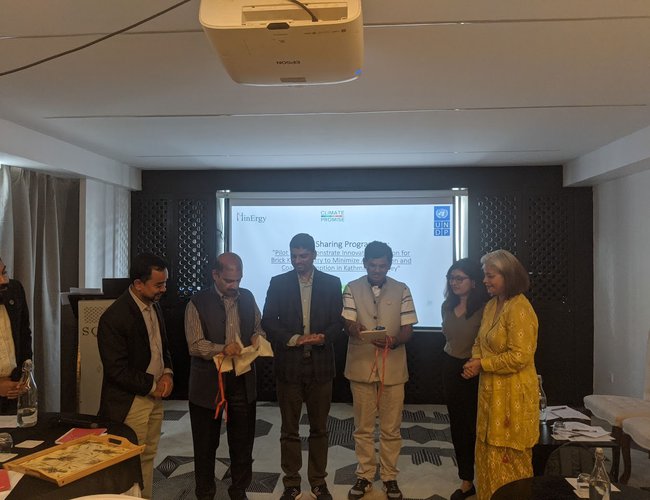
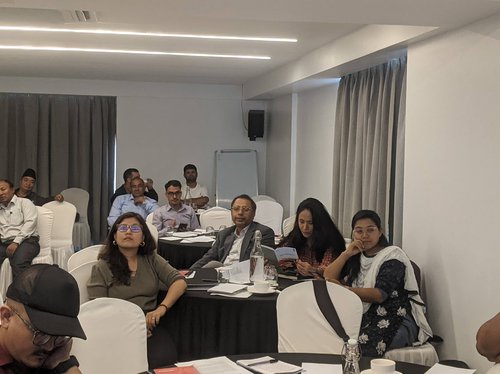
As brick kilns are the major sources of air pollution in Kathmandu Valley, Nepal cannot achieve the goal of Nationally Determined Commitments (NDC) presented as per the party of Paris Agreement without addressing the pollution produced by brick kilns.
Changing the current brick making technology, which consumes large amount of coal, is not easy. Given the public commitment expressed by Nepal's brick factory owners that they are ready to move with new technology, give hope.
Conducted by MinErgy Pvt Ltd, a study on "Pilot and Demonstration of Innovative Solution for Brick Kiln Industry to Minimize Air Pollution and Coal Consumption in Kathmandu Valley" has shown a way out that will ultimately benefit the brick kiln enterprises and the government plan to reduce the pollution.
The recently released study has proposed some technologies in brick production chains to minimize air pollution and coal consumption.
In a result sharing workshop on energy and environmental performance of Pilot and Demonstrate Innovative Solution for Brick Kiln Industry to Minimize Air Pollution and Coal Consumption in Kathmandu Valley, Suyesh Prajapati, lead of the study, recommended to promote the internal fuel brick firing technique to address air pollution and energy consumption issues in brick industries.
He said that there is a need to conduct similar demonstrations in at least three brick kilns over a longer period of time to generate conclusive evidence on energy and environmental performance, leading to reliable conclusions.
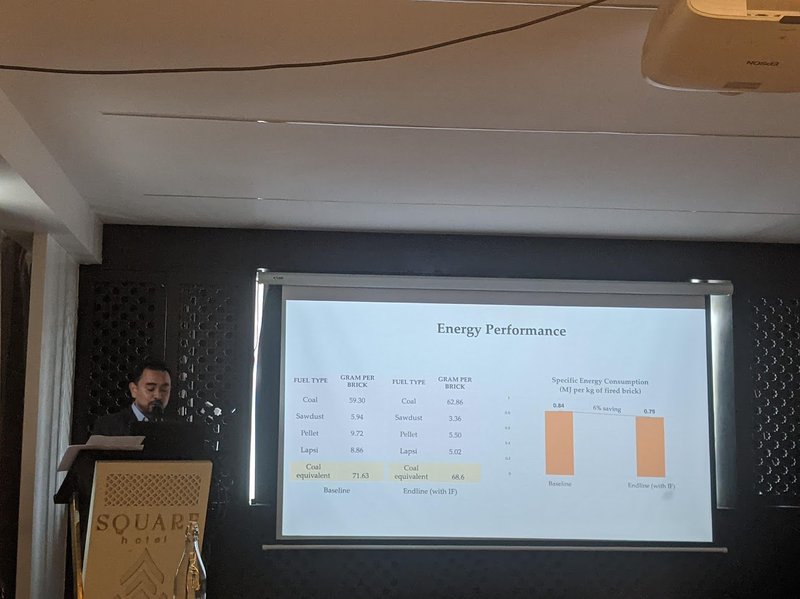
Prajapati emphasized the importance of providing brick entrepreneurs with additional capacity building and technical support to transition to internal fuel firing practices until reaching a critical mass. He also highlighted the energy mix standards, with 70% coal as internal fuel and 30% biomass pellet/briquette as external fuel. Furthermore, he stressed the need to establish standards for coal used in brick firing and stack emission standards.
Prajapati also mentioned the challenges associated with producing internal fuel bricks, including the need for mechanization and additional investment in equipment like coal feeders and brick making machines. He pointed out the importance of protecting internal fuel bricks from rain, requiring investment in proper drying sheds, and the necessity of close monitoring during firing. Capacity building for machine operators and fire masters was also highlighted as essential for internal fuel brick production.
The study focused on the government's commitment to achieving net-zero greenhouse gas emissions by 2045 and adopting low-emission technologies in the brick and cement industry by 2030 to reduce coal consumption and air pollution.
Prajapati stressed the need for innovative approaches to reduce internal fuel in brick production in zigzag brick kilns, considering the pressing issue of air pollution in Nepal.
With 1349 brick kilns, an annual brick production of 5.14 billion, and an investment of over Rs. 12.5 billion, brick kilns play a significant role in Nepal's economy. Despite providing employment to 246,000 people and contributing 2% to the GDP, the industry consumes about 500,000 tons of coal annually and emits 1.3 million tons of CO2.
Prajapati mentioned that there are 105 brick kilns in the valley that produce 660 million bricks annually and consume approximately 56,100 tons of imported coal. The brick industry in Kathmandu Valley is identified as the third largest source of suspended particulate matter (SPM), with PM10 emissions contributing 40% of black carbon during the winter season.
Brick kilns are recognized as the primary source of SO2 emissions. Throughout the research period, the team visited various brick kilns and experimented with different innovative methods to reduce pollution. The report highlights that inefficient coal burning is a major factor in the emission of black carbon (BC), particulate matter (PM), sulfur dioxide (SO2), carbon dioxide (CO2), carbon monoxide (CO), and nitrogen oxides (NOx) from brick kilns.
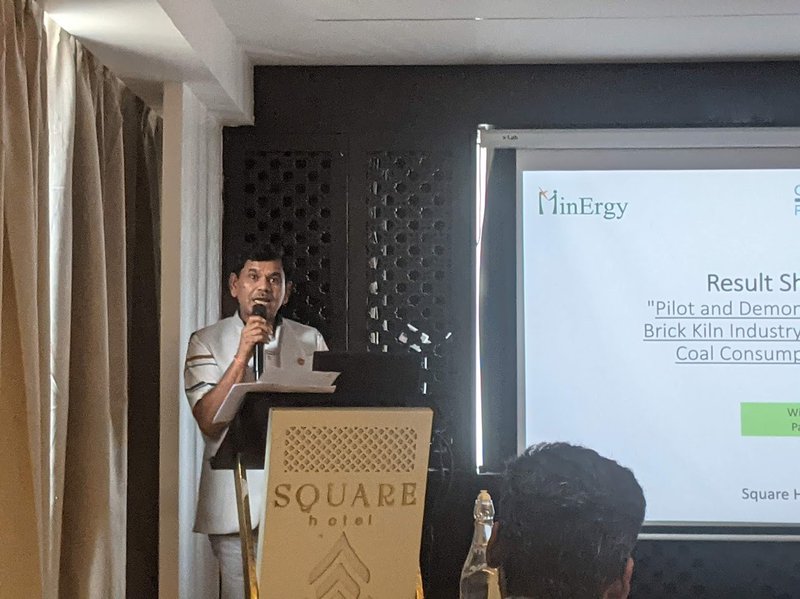
Despite efforts such as regulatory actions and technological advancements to enhance energy efficiency and reduce air pollution during the firing process, more work is needed. Utilizing coal as an internal fuel for brick firing, rather than an external fuel, can enhance environmental friendliness and energy efficiency. In internal fuel brick production, the fuel is mixed with the raw bricks a day before production, significantly decreasing the need for external fuel.
This result in reduced pollutants emitted during the external fuel feeding process. Moreover, internal fuel firing minimizes energy loss, making it more energy-efficient than external fuel firing. A demonstration of internal brick firing was conducted at Hossana Brick Factory in Harishiddhi, Lalitpur, where 40% of the required energy was incorporated as internal fuel.
The demonstration led to a 23% decrease in suspended particulate matter (SPM) emissions and a 6% decrease in energy consumption compared to the baseline. This outcome clearly suggests that internal fuel brick firing could be a cost-effective solution to tackle air pollution and energy consumption challenges in the brick industry.
However, additional demonstrations and technical assistance will be necessary for brick entrepreneurs to transition from current practices to internal fuel brick production. The UNDP's Climate Promise is assisting the Government of Nepal in enhancing and fulfilling its Nationally Determined Contributions under the Paris Agreement. This project is part of the Climate Promise Initiative, supported by funding from the Government of Germany and in collaboration with MinErgy Pvt. Ltd.
Report Release
During a ceremony, Shailesh Kumar Jha, Deputy Director General of the Department of Environment and Shanker Chand, President of the Federation of Nepalese Brick Industries (FNBI), jointly unveiled the report.
The event was attended by government officials from the Ministry of Environment, brick manufacturers, experts, and environmental activists. Chief guest Jha emphasized the relevance of the study results in the current context, mentioning that the department is working on reducing pollution from brick kilns and that the report will aid the government of Nepal.
Addressing the program, Pragyajan Yalambar Rai, Portfolio Manager of UNDP, highlighted that the project's findings can guide policymakers on interventions to minimize pollution from brick kilns.
Chand, the President of FNBI, stated their willingness to support the government's emission reduction efforts by utilizing new technology and innovation.
He noted that the widespread use of the ZZK model in brick factories could hinder the adoption of the new innovation introduced by the pilot project. Nevertheless, he highlighted that with government incentives, they would be open to implementing the technology suggested in the report.
Renowned brick entrepreneur Krishna Awale emphasized the importance of innovation and technology in the brick-making industry. He highlighted the benefits of adopting new technology and expressed his willingness to switch to the mechanized technology suggested by the pilot study.
With over 20 years of experience and a production capacity of over two million bricks per year, Awale's Hosanna Brick Factory has already transitioned to using machines to produce different sizes of hollow bricks. He also expressed openness to changing the current technology if it reduces costs by minimizing coal consumption.
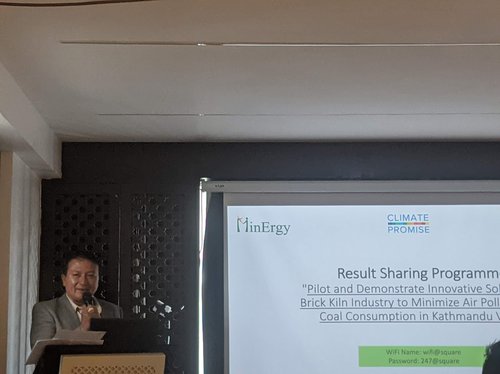
Additionally, he emphasized the need for modifications and the development of low-cost mixers and manuals for the application and firing of internal fuel bricks. Usha Maskey, CEO of MinErgy, also expressed gratitude for the report's recommendations, which included building the capacity of brick kiln owners and sensitizing relevant stakeholders on internal fuel brick firing.
The project's goal is to conduct testing and showcase the use of Internal Fuel (IF) brick firing in a selected ZZK in order to decrease coal usage and manage pollution. The project will exhibit the utilization of 50% coal as IF for brick firing, aiming to reduce Suspended Particulate Matter (SPM) emissions by 40% and fuel consumption by 10% compared to the baseline.
Despite being a small pilot project, the study is being prepared with extensive involvement from all stakeholders, including government officials, brick entrepreneurs, and experts. As mentioned by DDG Jha, the report could assist the Ministry of Environment in finalizing new emission guidelines for brick kilns.
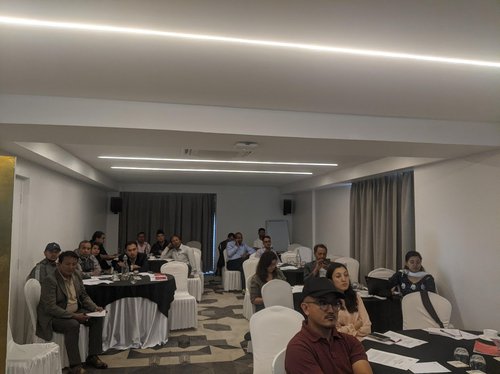

Keshab Poudel
Poudel is the editor of New Spotlight Magazine.
- FOURTH PROFESSOR Y.N. KHANAL LECTURE: Nepal-China Relations
- Jun 23, 2025
- Colonel JP CROSS: Centenary Birthday
- Jun 23, 2025
- REEEP-GREEN: Empowering Communities with MEP
- Jun 16, 2025
- BEEN: Retrofitted For Green
- May 28, 2025
- GGGI has been promoting green growth in Nepal for a decade: Dr. Malle Fofana
- May 21, 2025















